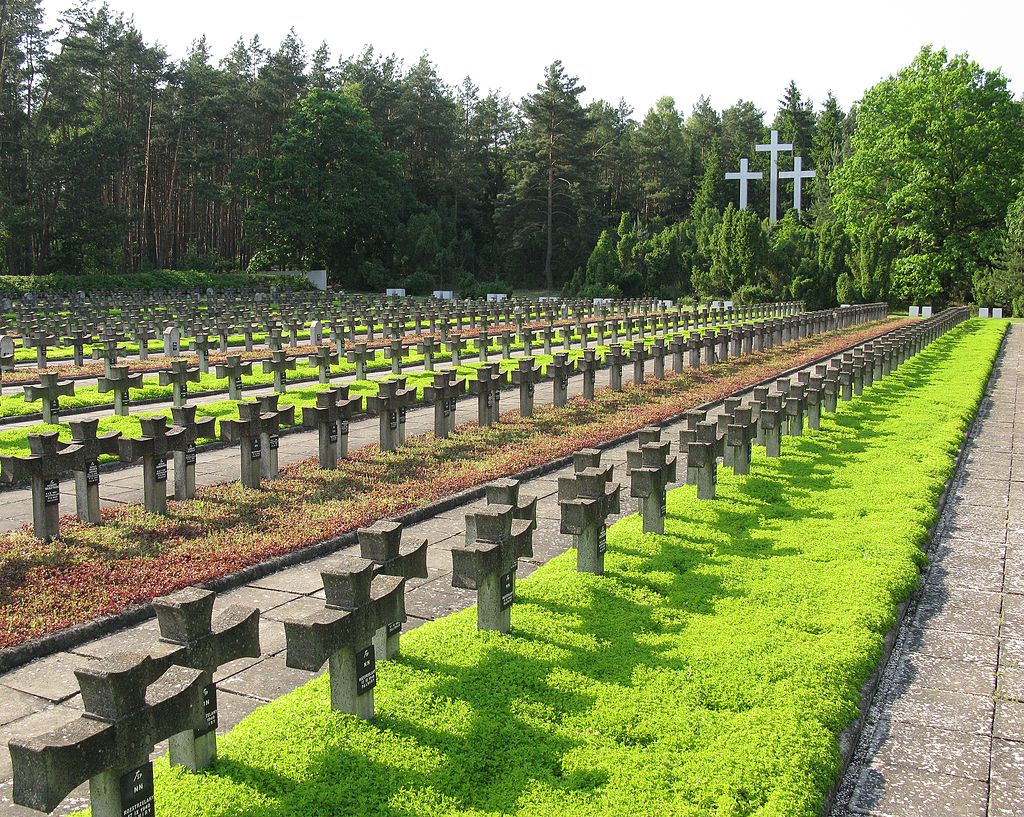It is worthwhile noting the above mentioned group – the Polish leadership elite – as its fate reveals the objectives of Nazi-Germany’s occupation policy in Poland. Before the outbreak of war, the German authorities began to plan the extermination of a broadly defined Polish leadership elite. Although generally referred to as the intelligentsia, with education and occupation as the main measure, in fact it was aimed at all of those active in Poland’s political, social, cultural or economic life. The extermination was carried out on the basis of arrest lists which eventually took the form of “Sonderfahndungsbuch”, or “Books of Poles pursued by arrest”, containing over 8,000 names – writes Professor Piotr Madajczyk.
by Piotr Madajczyk
Palmiry. This name did not mean much before the war, not even to the inhabitants of Warsaw. The village was founded in the 19th century on the edge of the Kampinos Forest, a large forest surrounding Warsaw in the north-west. Before WWII, a railway line was laid and ammunition depots located there. Palmiry might have initially been associated only with these things for, despite the damage caused by the German air force during and after the invasion of Poland by Nazi Germany from 1-21 September 1939, the troops defending Warsaw were supplied from there.
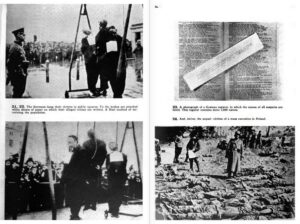
Yet soon Palmiry would assume a different role, although the name is mostly symbolic for the sites of the mass executions in the forest and a clearing near the village, along the road leading to the nearby village of Pociecha. This was not the only place where murders were committed near Warsaw, there were many of them and it is enough just to mention some here: Kabacki Forest, Sękociński Forest and Wólka Węglowa. The crimes committed there were referred to in post-war years as the “executions of the Warsaw ring” a description supported by Władysław Bartoszewski in his well-known book, Warszawski pierścień śmierci 1939-1944 (Warsaw Death Ring 1939-1944). Palmiry is strongly remembered in Poland. Within the “Warsaw Death Ring”, the scale of the executions of the inhabitants of Warsaw and surrounding towns was unparalleled and included those belonging to the political, scientific and social elite.
From December 1939 up to the summer of 1941, the Germans carried out 21 executions near Palmiry during which Polish citizens, both Polish and Jewish, were shot. The number of people murdered cannot be accurately determined, although almost 1,800 bodies have been found in the mass graves. From the perpetrators’ perspective the place was optimal: situated in a large forest, and at the same time only about 30 km from Warsaw, with a good connection to and from the city.
Those murdered in Palmiry belonged to three categories: members of the Polish leadership elite, people involved in the underground and those murdered as part of a repression (these were mostly hostages who were shot in retaliation). Often these categories overlapped, because after all, members of the pre-war elite were often involved in the resistance movement or fell victim to German retaliation. There were also people of Jewish nationality or Jewish origin (those found during post-war exhumations had armbands with the Star of David), but it is difficult to determine in all cases why some people were murdered in Palmiry. People under 18 were also victims of the executions carried out there.
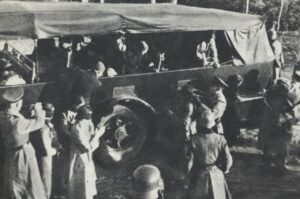
It is worthwhile noting the above mentioned group – the Polish leadership elite – as its fate reveals the objectives of Nazi-Germany’s occupation policy in Poland. Before the outbreak of war, the German authorities began to plan the extermination of a broadly defined Polish leadership elite. Although generally referred to as the intelligentsia, with education and occupation as the main measure, in fact it was aimed at all of those active in Poland’s political, social, cultural or economic life. The extermination was carried out on the basis of arrest lists which eventually took the form of “Sonderfahndungsbuch”, or “Books of Poles pursued by arrest”, containing over 8,000 names. The first strike, carried out by the Einsatzgruppen and a group consisting of members of the German minority in Poland known as Selbstschutz, took place in autumn 1939 in the western territories of Poland, primarily in Pomerania, Wielkopolska, and Upper Silesia. It also included Polish activists in Germany and the annexed Free City of Gdansk.
The course of events was different in the General Government. The main wave of repression occurred in the spring of 1940, later than in the Polish western territories annexed by Germany, and was part of the so-called AB Aktion (Ausserordentliche Befriedungsaktion). It is not known what factors lead to this decision. Was Berlin afraid of international reaction in autumn 1939, especially in the neutral countries and Italy?
Warsaw played a special role in pre-war Poland despite the existence of other strong urban centers such as Poznań, Kraków and Lwów. Before the war, it had about 1.3 million inhabitants, and constituted the center of Polish political, scientific and cultural life. It suffered painful losses, both human and material, during the attack in September 1939 as a result of shelling and bombing.
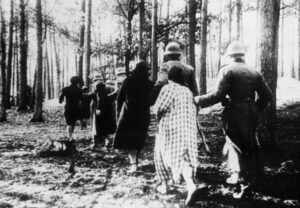
In the first phase of the occupation there was no organized resistance movement, but the German occupation authorities carried out repressions from the beginning. Its scale was then smaller than in the western territories, it consisted mainly of persecution and extermination of the intelligentsia, retaliatory executions and increasingly brutal round-ups in Warsaw. Already in October, the execution lists appeared in the city. From the beginning, the German occupation authorities carried out executions in two ways. Sometimes people were shot on the streets to make it immediately visible to the Polish society. Most executions, however, were carried out in secret, and at most the close family would be informed. These secret executions were first carried out on the Vistula embankment at the back of the Sejm (Sejm Gardens), then from December 1939 cars with convicts set off towards Modlin, to Palmiry.
The place of execution was carefully prepared, as Władysław Bartoszewski described years ago. Trees were cut down to enlarge the clearing, and pits were dug in which victims were buried. Prisoners were usually brought from Pawiak, a prison located in Warsaw at Dzielna Street, not as much from other prisons. The transports set off in the morning to give prisoners the impression that they were going to a concentration camp. An impression reinforced by the fact that] they were allowed to take luggage or given bread for the trip, and, sometimes, their documents and personal items were returned. The prisoners only understood the situation when the cars rolled into the woods. At that moment they attempted to leave some evidence of their fate but they had little time left. The trucks stopped, the prisoners got out and were led to a clearing. They were forced to stand quite close to each other along the edge of the pit and shot with machine guns. Those who were still alive were then shot with pistols.
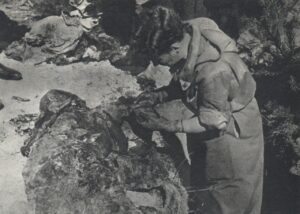
The first executions probably took place on 7 and 8 December 1939 and around 150 people were killed, about whom little is known. About a week later, on 14 December, 46 people were shot, including the inhabitants of Pruszków, but again they were mostly unidentified. Another wave of mass executions was associated with the unmasking and breaking up of the underground organization Polish People’s Independence Action; during the arrests that followed, whole families were sometimes imprisoned because of collective responsibility. A total of 255 Jews were arrested because of the Jewish origin of the organization’s leader, Andrzej Kazimierz Kott. Their lives probably also ended in Palmiry. Among them were lawyers, engineers, doctors, teachers, rabbis, but also a tailor, baker, glazier and worker.
The first winter months of 1940 brought further executions, including some in retaliation for the murder of the German mayor of Legionowo. At the time, the Polish side was not yet aware that Palmiry was the place of execution. It was only in the spring, that information was received that the prisoners were being taken to Modlin, although it was not yet known where and for what purpose.
On 30 March 1940 in Warsaw, Ludwik Landau – who kept a diary that he wrote in every day and which would eventually be published in the 1960s as the Chronicle of War and Occupation – noted: “The anti-Jewish riots ceased suddenly as is only possible in the case of incidents staged by the authorities. At the same time, there were mass arrests.” He repeated this the day after, stressing uncertainty and ignorance about the reasons and aims of the arrests. Of those detained in Warsaw some were sent to concentration camps and others murdered in Palmiry.
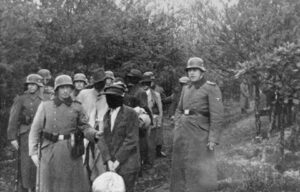
Subsequent executions took place on 2 and 23 April, and in April and May arrests under AB Aktion increased. Mass shootings intensified in June, taking place on the 14th, 20th, and 21st. The last two probably included over 358 people who were buried in three mass graves. Here again the term “probably” is used because the lists of people shot were questionable, incomplete, and some prisoners (it is not known how many) were added to transports from other prisons.
The June executions reflect the objectives of AB Aktion, although among those murdered were also those arrested for participating in the resistance movement: Maciej Rataj, a peasant activist, member of the Sejm and its long-time speaker; Mieczysław Niedziałkowski, a socialist activist, member of the Sejm and journalist; and Janusz Kusociński, an athlete, long distance runner, and gold medalist at the Los Angeles Olympics. All three were involved in underground activities. Niedziałkowski matched the criteria according to which victims of AB Aktion were selected, but he was sentenced to death because the Germans were convinced of his underground involvement. Rataj, who was also involved in underground activities, was arrested first on 28 November 1939, and then again on 30 March 1940, and was not released.
These three men are symbols because they are best known, but next to them in the mass graves were politicians, high state officials, members of the judiciary, engineers, teachers, people of culture, doctors, journalists, sportsmen, social activists. We can only assume that Stefan Starzyński, the last pre-war president of Warsaw was taken to Palmiry. He had been arrested in October 1939 and later imprisoned in Pawiak in November, from where he was eventually removed and disappeared without a trace. The families of those who were murdered were often taken to concentration camps.
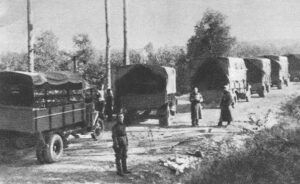
The June executions were the largest in number, but in the following months of 1940 further groups of prisoners were murdered in Palmiry at the end of August and on 17 September – almost 200 persons, officials, journalists, doctors, and others involved in underground activity. Little is known about later executions. Among them were women, priests, and people with a Star of David armband. Executions in retaliation for the actions of the Polish Underground State were carried out in 1941, and the victims were not only residents of Warsaw. In June 1944, one of the soldiers of the underground group “Parasol” would be shot in Palmiry.
Although the graves were carefully hidden by the perpetrators, the executions could not be kept secret despite all precautions taken by the German authorities. Local residents and Polish forest service workers knew about them and marked the places where the graves were located. Based on this information, exhumation works were carried out after the war. Twenty four mass graves were found, but it is not known whether these are all of them. It is difficult to determine the exact number of victims, only some of them were identified based on documents found with the victims, the lists of some transports, and the testimonies of witnesses. The identity of only half of those murdered is known. The direct perpetrators were never held responsible, except for SS-Standartenführer Josef Meisinger, the commander of the Security Police and SD for the Warsaw District, who was responsible for carrying out the execution and was sentenced to death. During the war, his brutality raised doubts even in the German authorities.
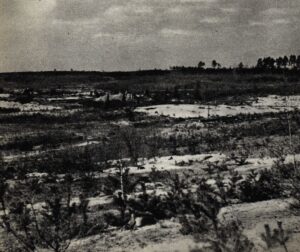
A cemetery was established in Palmiry after the war, and those murdered in other places near Warsaw were also buried there. From 1973, there has been a Museum of Struggle and Martyrdom there, dedicated to both the history of the crimes committed there and post-war exhumation, as well as partisans fighting in the Kampinos Forest. In 2011, it was replaced by a new Museum – Palmiry Memorial Site, along with a multimedia exhibition.
Bibliography:
Ausserordentliche Befriedungsaktion 1940 – akcja AB na ziemiach polskich: materiały z sesji naukowej (6-7 listopada 1986 r.), ed. Zygmunt Mańkowski, Warszawa 1992
Bartoszewski Władysław, Palmiry: 1940-1941, Warszawa 1969, 1976
-, Warszawski pierścień śmierci 1939-1944, Warszawa 1970
Landau Ludwik, Kronika lat wojny i okupacji, vols. I-III, Warszawa 1962.
Memorial Site, Palmiry Museum, https://palmiry.muzeumwarszawy.pl/en/
Specjalna księga gończa dla Polski. Sonderfahndungsbuch Polen, Poznań 2019, eds. Maria Rutowska, Anna Ziółkowska;
Sonderfahndungsbuch Polen. Specjalna księga gończa dla Polski, ed. Grzegorz Bębnik, Katowice – Warszawa 2019;
Wardzyńska Maria, Był rok 1939. Operacja niemieckiej policji bezpieczeństwa w Polsce. Intelligenzaktion, Warszawa 2009
Author: Piotr Madajczyk
Translation: Alicja Rose & Jessica Sirotin

